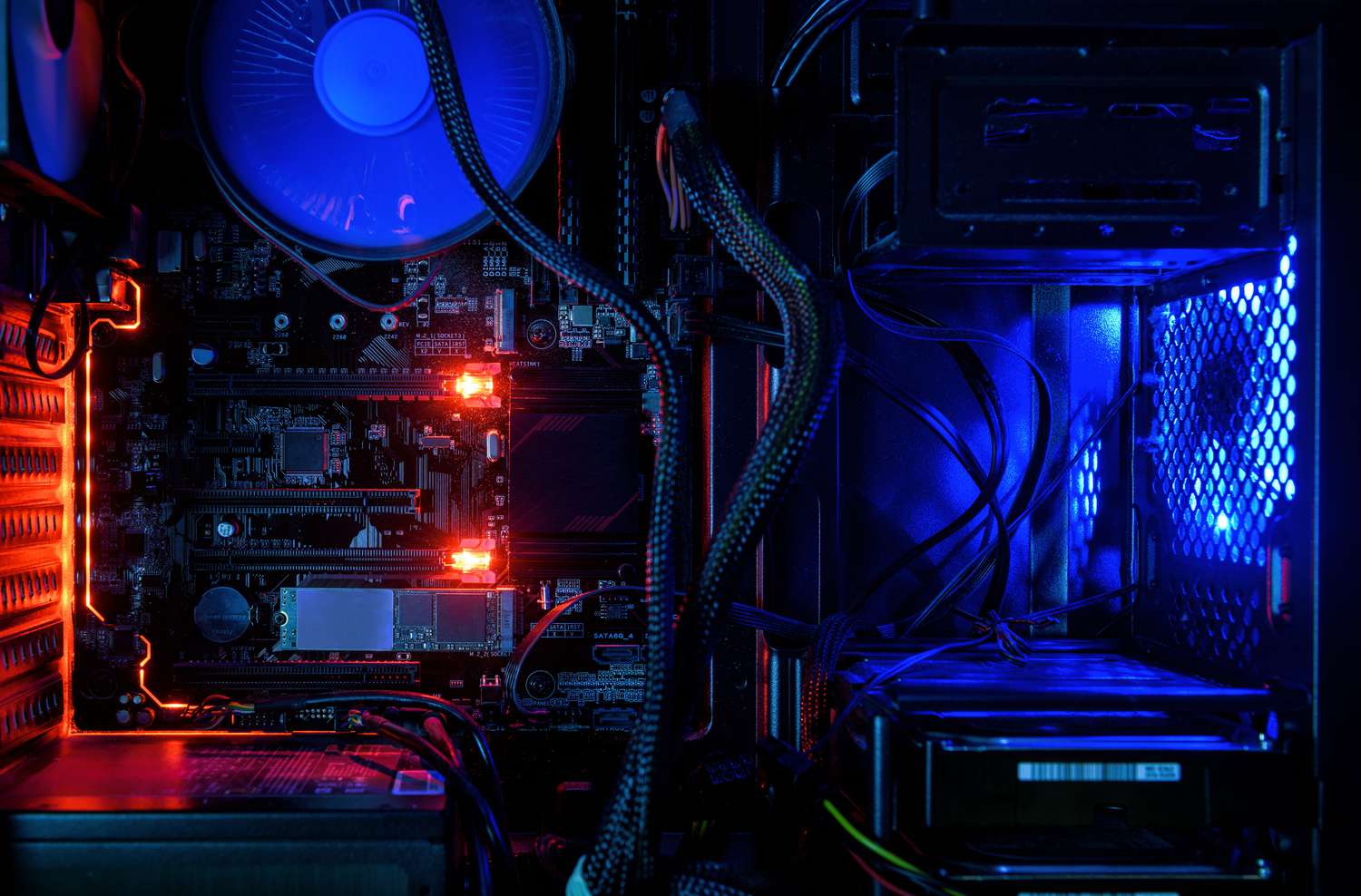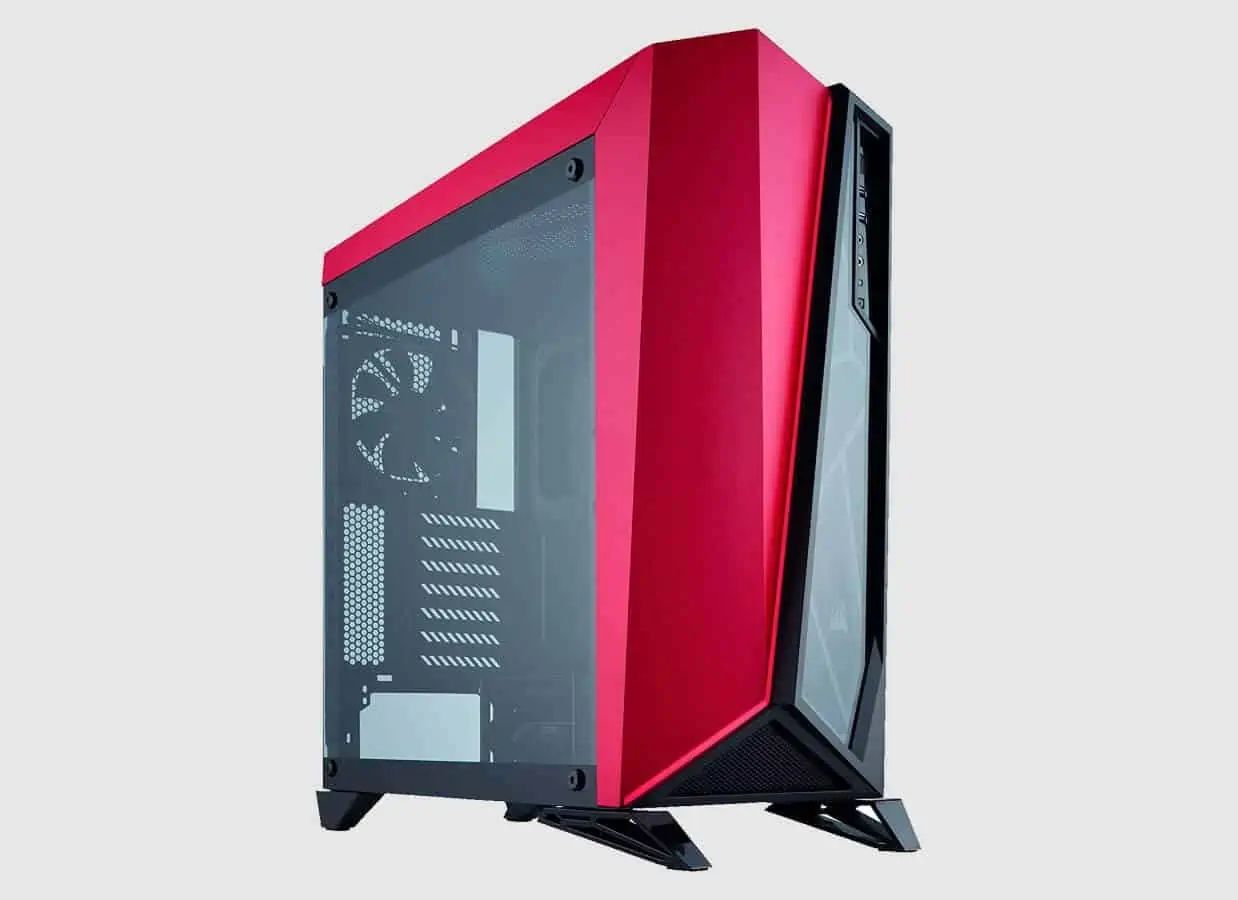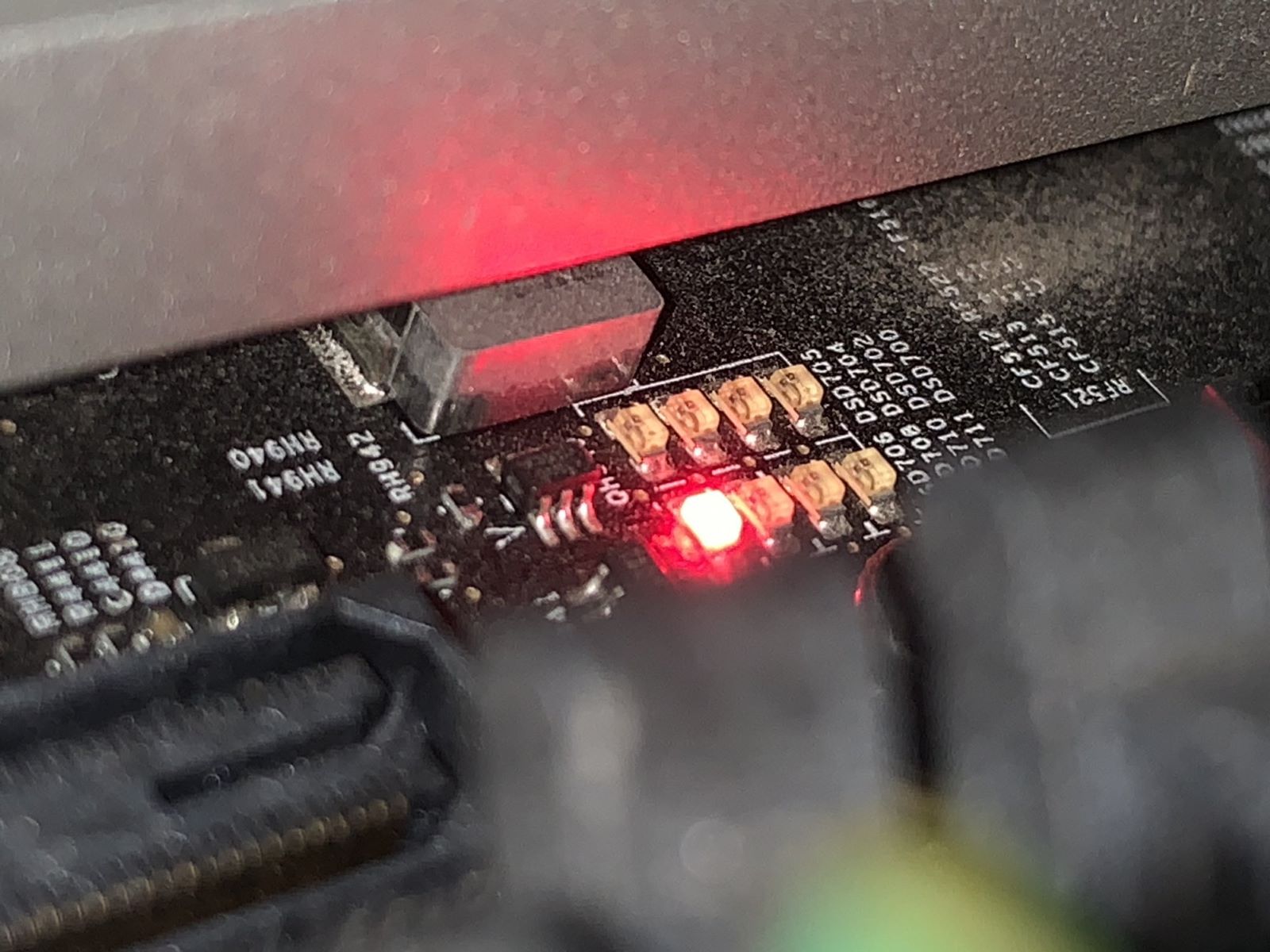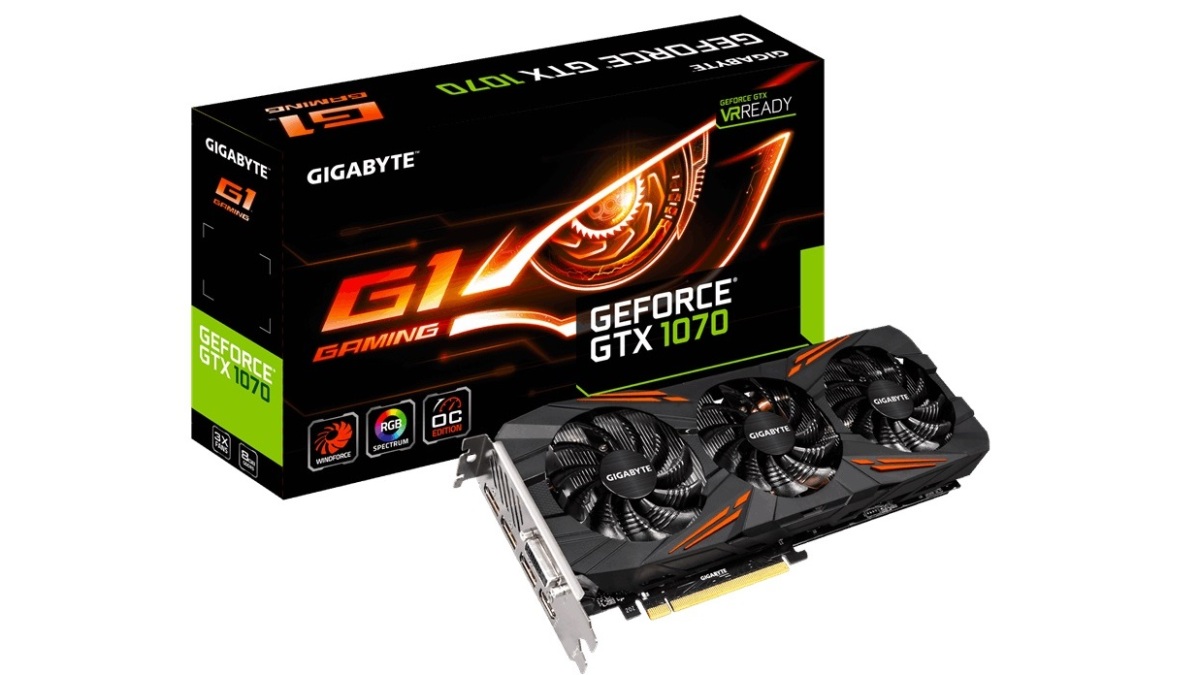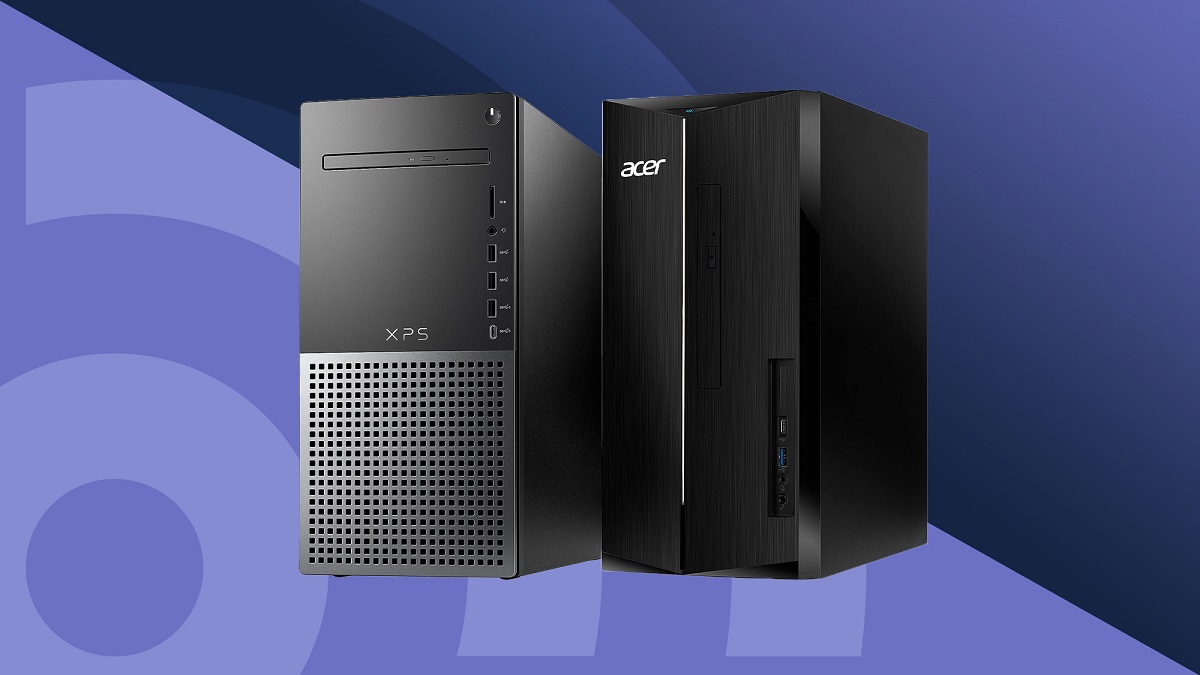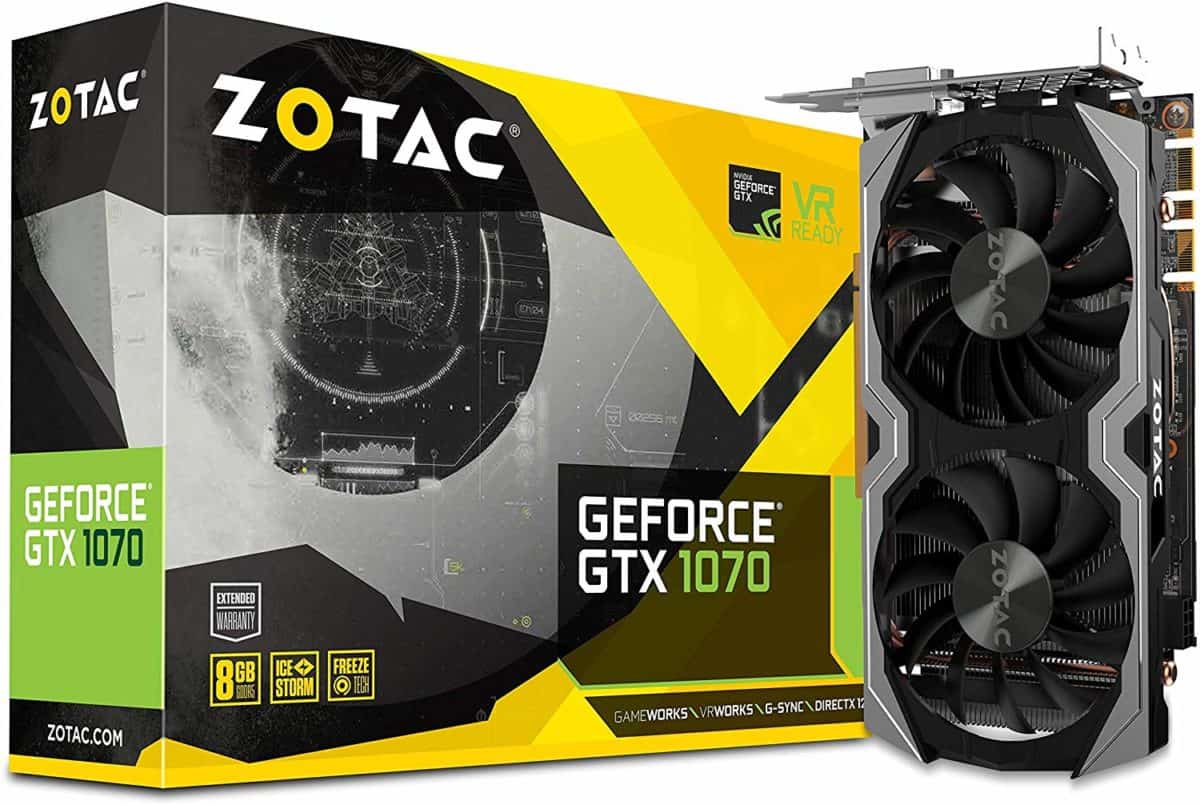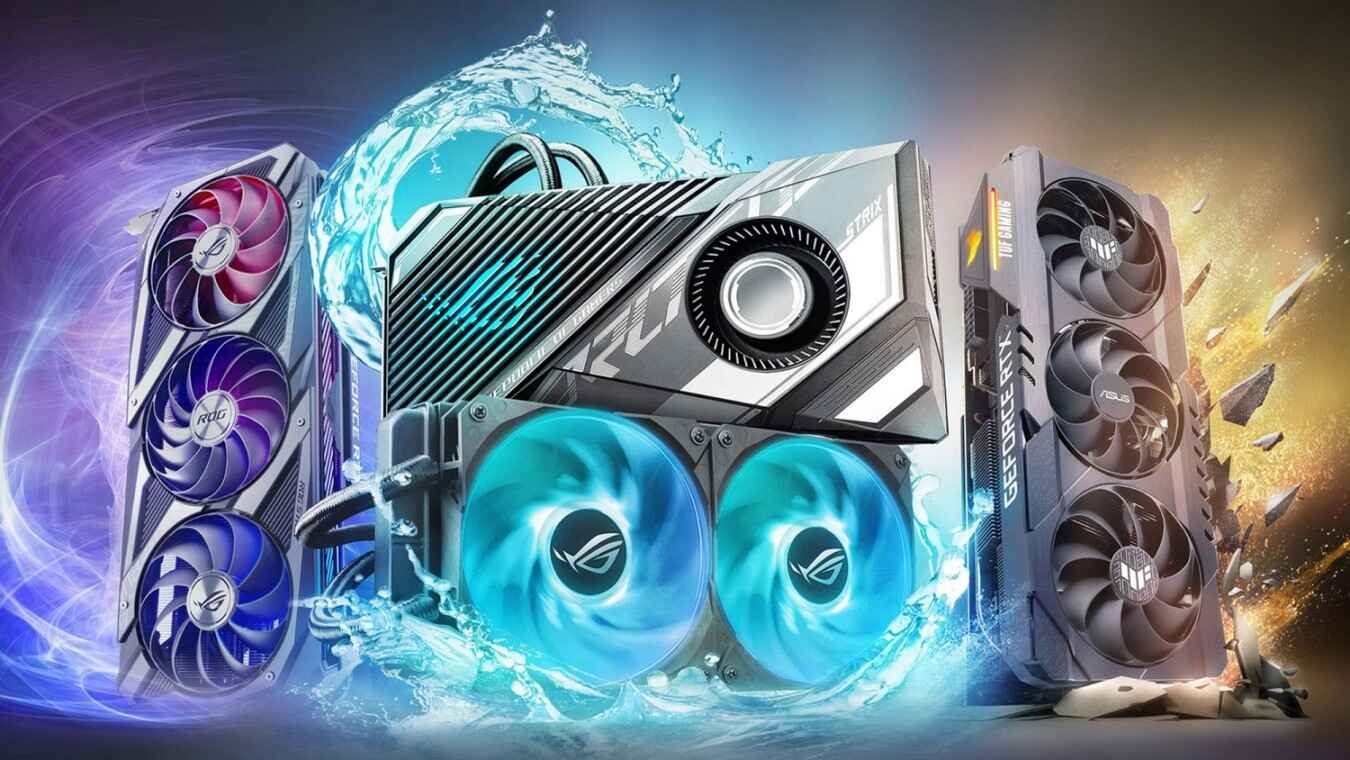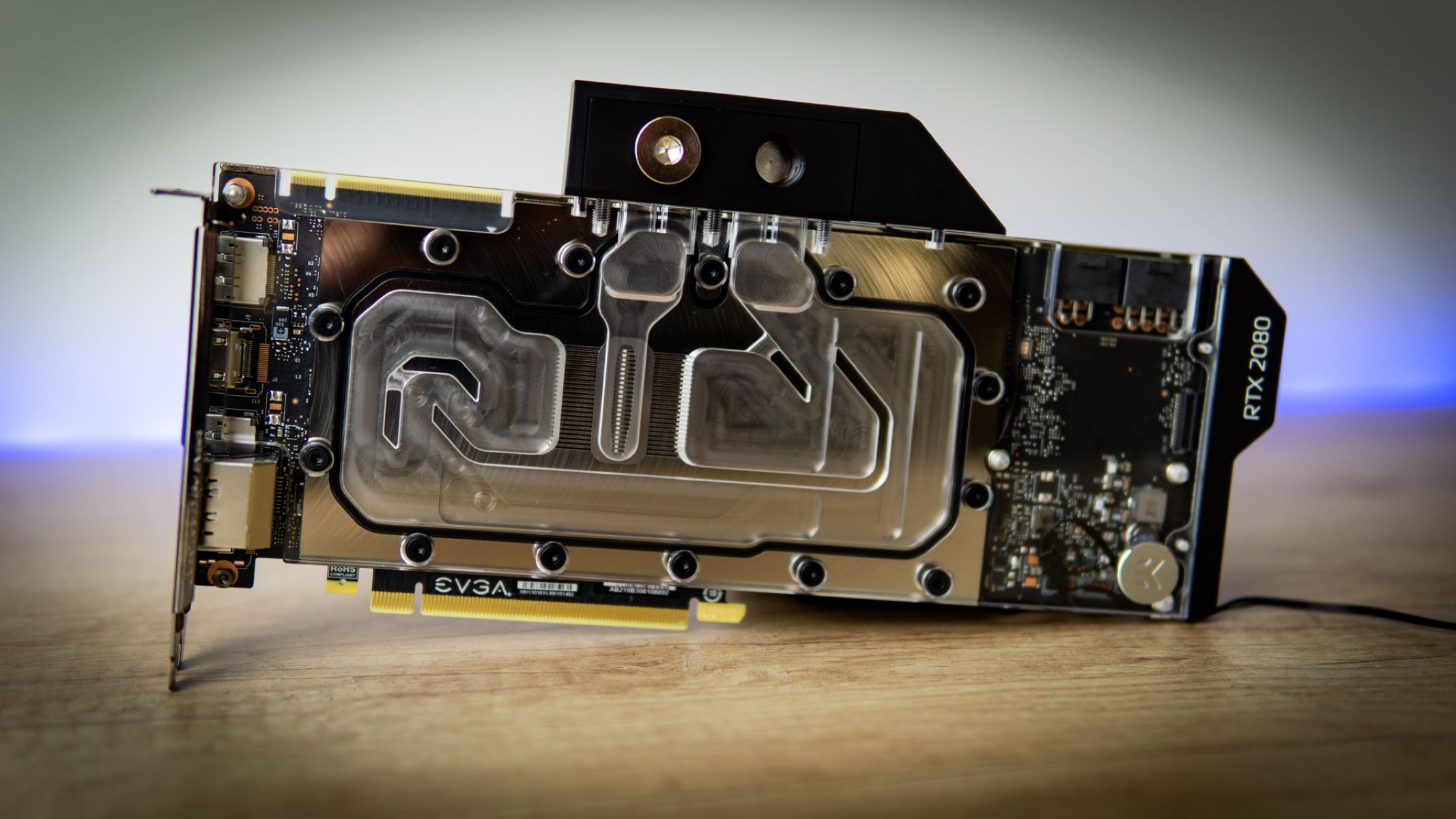Why is there a red light on my graphics card?
If you’ve noticed a red light on your graphics card, you may be wondering what it signifies. The red light serves as an indicator of a potential issue affecting your graphics card. Understanding the possible causes behind the red light can help you troubleshoot and resolve the issue effectively.
There can be several reasons why you see a red light on your graphics card. It is essential to identify the specific cause to determine the appropriate solution. Here are a few possible explanations:
- Overheating: One common cause of a red light on the graphics card is overheating. The red light acts as a warning sign to indicate that the graphics card’s temperature has exceeded its optimal limit. Overheating can occur due to poor ventilation, dust accumulation, or overclocking the graphics card.
- Power supply issues: Another cause of the red light on your graphics card could be a problem with the power supply. Insufficient power or unstable voltage supply can trigger the red light indicator. Ensure that your power supply unit (PSU) is providing enough power to support the graphics card’s requirements.
- Driver problems: Outdated or incompatible graphics card drivers can also lead to the appearance of a red light. This issue can occur when you update your operating system, install new software, or if the drivers become corrupted. Keeping your graphics card drivers up to date is crucial for optimal performance and compatibility.
Identifying the specific cause of the red light on your graphics card is the first step towards resolving the issue. In the next sections, we will explore how to troubleshoot and fix the problem effectively.
Possible causes of a red light on your graphics card
When you notice a red light on your graphics card, it is crucial to understand the potential causes behind it. Here are some possible explanations for the appearance of a red light on your graphics card:
- Hardware malfunction: A red light on your graphics card could indicate a hardware malfunction. This could be due to a defective component, loose connection, or physical damage to the card. Inspecting the card for any visible signs of damage and reseating the connections may help resolve the issue.
- Overheating: Graphics cards are prone to overheating, especially during intensive tasks like gaming or running resource-demanding applications. If the card exceeds its safe operating temperature, a red light may illuminate. Ensure that your graphics card is adequately cooled with proper airflow and consider cleaning any dust or debris that may be blocking the heatsink or fans.
- Power supply issues: Insufficient power supply can lead to a red light on your graphics card. If the power supply unit (PSU) is unable to provide enough power to the card, it may trigger the red light indicator. Ensure that your PSU is of sufficient wattage and that all power cables are securely connected to the graphics card.
- Driver problems: Outdated or incompatible graphics card drivers can result in a red light appearing. Issues with drivers can arise after a system update, installation of new software, or if the drivers become corrupted. To address this, consider updating the graphics card drivers to the latest version provided by the manufacturer.
- Compatibility issues: Certain graphics cards may have compatibility issues with specific motherboards or other hardware components in your system. This can manifest as a red light on your graphics card. Verify that your graphics card is compatible with your motherboard and that all necessary connections are properly established.
Take note of these potential causes, as they will help you in troubleshooting and finding the appropriate solution to resolve the red light issue on your graphics card.
Overheating issues and red light on your graphics card
One of the common causes of a red light on your graphics card is overheating. Graphics cards generate a substantial amount of heat, especially during demanding tasks like gaming or rendering graphics-intensive applications. When the temperature exceeds a certain threshold, the red light serves as a warning sign of potential overheating issues.
Several factors can contribute to overheating, including:
- Poor ventilation: Inadequate airflow within your computer case can impede the cooling of your graphics card. Ensure that your system has proper ventilation, and the fans are functioning correctly. Consider adding additional case fans or installing a more efficient cooling system if necessary.
- Dust accumulation: Dust buildup on the graphics card’s heatsink and fan can hinder heat dissipation, leading to increased temperatures. Regularly clean your graphics card using compressed air or antistatic brushes to remove any accumulated dust or debris.
- Overclocking: Overclocking your graphics card, a process of increasing its clock speed to boost performance, can lead to higher heat generation. If you have manually overclocked your card, it is important to ensure that it is within safe limits. Excessive overclocking can strain the card and cause overheating issues.
When dealing with overheating issues and a red light on your graphics card, there are several steps you can take to alleviate the problem:
- Proper cooling: Verify that your computer case has sufficient cooling options, such as fans or liquid cooling systems. Ensure that the fans are running smoothly and that there are no obstructions blocking airflow.
- Clean your graphics card: Regularly clean your graphics card to remove any dust or debris that may be obstructing the cooling system. This can be done using compressed air or antistatic brushes, ensuring that the system is powered off and disconnected before cleaning.
- Adjust fan curves: Graphics card manufacturers often provide software that allows you to customize the fan speed curves. By increasing the fan speed, you can enhance cooling efficiency and reduce the chances of overheating.
- Consider underclocking: If you have overclocked your graphics card, consider reverting it to its default clock speed. Underclocking can reduce the heat generated, helping to mitigate overheating issues.
- Monitor temperatures: Install monitoring software to keep track of your graphics card’s temperature. This will allow you to identify any abnormal spikes in temperature and take appropriate action to prevent overheating.
Addressing overheating issues is vital for the longevity and performance of your graphics card. By implementing these measures, you can effectively manage the red light and ensure optimal functioning of your graphics card.
Issue with power supply and red light on your graphics card
If you notice a red light on your graphics card, it could indicate an issue with the power supply. Insufficient power or unstable voltage supply can trigger the red light indicator, disrupting the proper functioning of your graphics card.
Here are a few potential problems with the power supply that can lead to a red light on your graphics card:
- Insufficient power: Graphics cards require a certain amount of power to operate efficiently. If your power supply unit (PSU) doesn’t provide enough power to support the graphics card’s requirements, it can result in the red light appearing. Check the wattage of your PSU and compare it to the power consumption specifications of your graphics card.
- Loose power connections: If the power cables connecting your graphics card to the PSU are not securely attached or have become loose over time, it can disrupt the power supply. Ensure that the power cables are properly connected and tightly secured to both the PSU and the graphics card.
- Unstable voltage: Fluctuations in voltage supply can also cause the red light to appear on your graphics card. This can be the result of an unstable power source or issues with the voltage regulation modules. Using a high-quality surge protector or an uninterruptible power supply (UPS) can help stabilize the voltage and prevent fluctuations that may trigger the red light.
To address power supply issues and resolve the red light on your graphics card, consider the following steps:
- Upgrade your power supply: If your current PSU is not supplying sufficient power to your graphics card, consider upgrading to a higher wattage PSU that can meet the power requirements of your graphics card and other components in your system.
- Reconnect power cables: Ensure that the power cables connecting your graphics card to the PSU are securely attached. Check for any loose connections and reseat the cables if necessary.
- Stabilize voltage supply: Use a surge protector or UPS to regulate the incoming power supply and prevent fluctuations that can affect your graphics card. This can provide a stable and consistent power output.
By addressing power supply issues, you can effectively resolve the red light and ensure that your graphics card receives the necessary power for optimal performance.
Driver issues and red light on your graphics card
If you are experiencing a red light on your graphics card, one possible cause could be related to driver issues. Outdated or incompatible graphics card drivers can lead to various problems, including the appearance of a red light indicator.
Here are a few driver-related issues that can trigger the red light on your graphics card:
- Outdated drivers: Over time, graphics card manufacturers release updates to improve performance, fix bugs, and ensure compatibility with the latest software and games. If you haven’t updated your graphics card drivers for a while, it’s possible that outdated drivers are causing the red light to appear.
- Incompatible drivers: Installing incompatible drivers for your graphics card can also result in the red light issue. This can occur when installing drivers meant for a different graphics card model or when using drivers that are not optimized for your operating system.
- Corrupted drivers: If the graphics card drivers become corrupted, they may not function correctly, leading to various issues, including the red light indicator. This can happen due to software conflicts, improper installation, or system errors.
To troubleshoot driver-related issues and resolve the red light on your graphics card, consider the following steps:
- Update your drivers: Visit the website of your graphics card manufacturer and download the latest drivers compatible with your graphics card model and operating system. Installing the most up-to-date drivers can address compatibility issues and resolve any bugs or problems related to outdated drivers.
- Uninstall and reinstall drivers: If you suspect that the current drivers are corrupted, you can try uninstalling them and then reinstall the drivers from scratch. Use a reliable driver uninstallation tool or the built-in uninstallation feature within the operating system to ensure a clean removal before installing fresh drivers.
- Use driver management software: Driver management software programs can help you keep track of driver updates and ensure that you have the latest compatible drivers. These tools can automatically scan your system, detect outdated or corrupted drivers, and provide a convenient way to update them.
By addressing driver issues and ensuring that you have the correct and up-to-date drivers installed, you can effectively resolve the red light problem on your graphics card and maintain optimal performance.
How to troubleshoot a red light on your graphics card
If you’re experiencing a red light on your graphics card, it’s essential to troubleshoot the issue to identify the cause and find an appropriate solution. Here are some steps you can take to effectively troubleshoot a red light on your graphics card:
- Check physical connections: Ensure that your graphics card is properly seated in its slot on the motherboard. Remove and reinsert the card if necessary to ensure a secure connection. Additionally, check all power connections to the graphics card and ensure they are firmly connected.
- Monitor temperatures: Install software to monitor the temperatures of your graphics card. High temperatures can be a cause of the red light. If the temperatures are too high, check for proper airflow, clean any dust or debris, and consider adjusting fan speeds or adding additional cooling solutions.
- Examine power supply: Verify that your power supply unit (PSU) is providing sufficient power to the graphics card. Make sure the PSU is of adequate wattage and that all power cables are correctly connected. Consider testing with a different, known-working PSU if available.
- Update drivers: Visit the manufacturer’s website and download the latest drivers for your graphics card. Installing up-to-date and compatible drivers can often resolve issues related to outdated or malfunctioning drivers. Ensure that you properly uninstall the old drivers before installing the new ones.
- Test on a different system: If possible, try installing your graphics card on a different computer to see if the red light issue persists. This can help determine if the problem lies with the graphics card itself or other components in your system.
- Remove and reinstall: If none of the above steps have resolved the issue, try removing the graphics card from your system and reinstalling it. This can help ensure a proper connection and eliminate any potential hardware or installation issues.
- Seek professional assistance: If you’ve exhausted all troubleshooting steps and are still experiencing a red light on your graphics card, consider seeking professional assistance. Contact the graphics card manufacturer’s support or consult a qualified technician who can diagnose and repair the issue.
By following these troubleshooting steps, you can effectively identify and resolve the cause of the red light on your graphics card, restoring its normal operation and ensuring optimal performance.
Step-by-step guide to fixing a red light on your graphics card
If you’re facing a red light on your graphics card, here is a step-by-step guide to help you fix the issue:
- Check physical connections: Ensure that your graphics card is properly seated in its slot on the motherboard. Remove the card, clean the contacts if necessary, and firmly reinsert it to establish a secure connection. Also, check and reseat all power connections to the graphics card.
- Monitor temperatures: Install software to monitor the temperatures of your graphics card. If temperatures are too high, ensure that your system has proper ventilation and clean any dust or debris from the heatsink and fans. Adjust fan speeds or consider adding additional cooling solutions if needed.
- Power supply check: Verify that your power supply unit (PSU) is supplying sufficient power to the graphics card. Make sure the PSU has enough wattage and that all power cables are securely connected. Consider testing with a different, known-working PSU if available.
- Update drivers: Visit the manufacturer’s website and download the latest drivers for your graphics card. Uninstall the existing drivers from your system and install the new drivers properly. Restart your computer after the installation.
- Benchmark and stress test: Use benchmarking and stress-testing software to evaluate the performance and stability of your graphics card under heavy load. This can help identify any further issues or inconsistencies that may not be apparent during regular usage.
- Reinstall graphics card: If the issue persists, carefully remove the graphics card from your system. Clean the contacts if needed, ensure there are no visible signs of damage, and reinstall the card securely. Make sure all power connections are properly seated during reinstallation.
- Seek professional help: If none of the above steps resolve the issue, it may be time to seek professional assistance. Contact the graphics card manufacturer’s support or consult a qualified technician who can diagnose and repair any hardware or compatibility issues.
While following this step-by-step guide can help in resolving the red light issue on your graphics card, it’s important to proceed with caution and ensure proper handling of the hardware components involved.
Remember to consult the user manual and follow any specific instructions provided by the graphics card manufacturer to avoid any potential damage or voiding of warranties.
Conclusion
A red light on your graphics card can be a cause for concern, but by understanding the possible causes and following appropriate troubleshooting steps, you can resolve the issue and restore optimal performance.
Overheating, power supply problems, driver issues, and hardware malfunctions are common culprits behind the appearance of a red light on your graphics card. By identifying the specific cause, you can take targeted actions to address the underlying problem.
Proper ventilation, regular cleaning, and ensuring sufficient power supply are essential for preventing overheating and power-related issues. Keeping your graphics card drivers up to date and resolving any compatibility or corruption issues can also help eliminate the red light indicator.
By following the step-by-step guide for troubleshooting and fixing a red light on your graphics card, you can effectively diagnose and rectify the issue. However, it’s important to undertake these steps with caution and seek professional assistance if needed.
Remember, the health and performance of your graphics card are vital for smooth gaming, graphic design, and other demanding tasks. Regular maintenance and timely troubleshooting can help prolong the lifespan of your graphics card and ensure a seamless computing experience.
Always refer to the manufacturer’s documentation and seek support from their official channels for specific troubleshooting instructions or if you encounter any difficulties along the way.
By addressing the red light issue promptly, you can enjoy the full capabilities of your graphics card and continue to explore the world of immersive graphics and high-performance computing.







